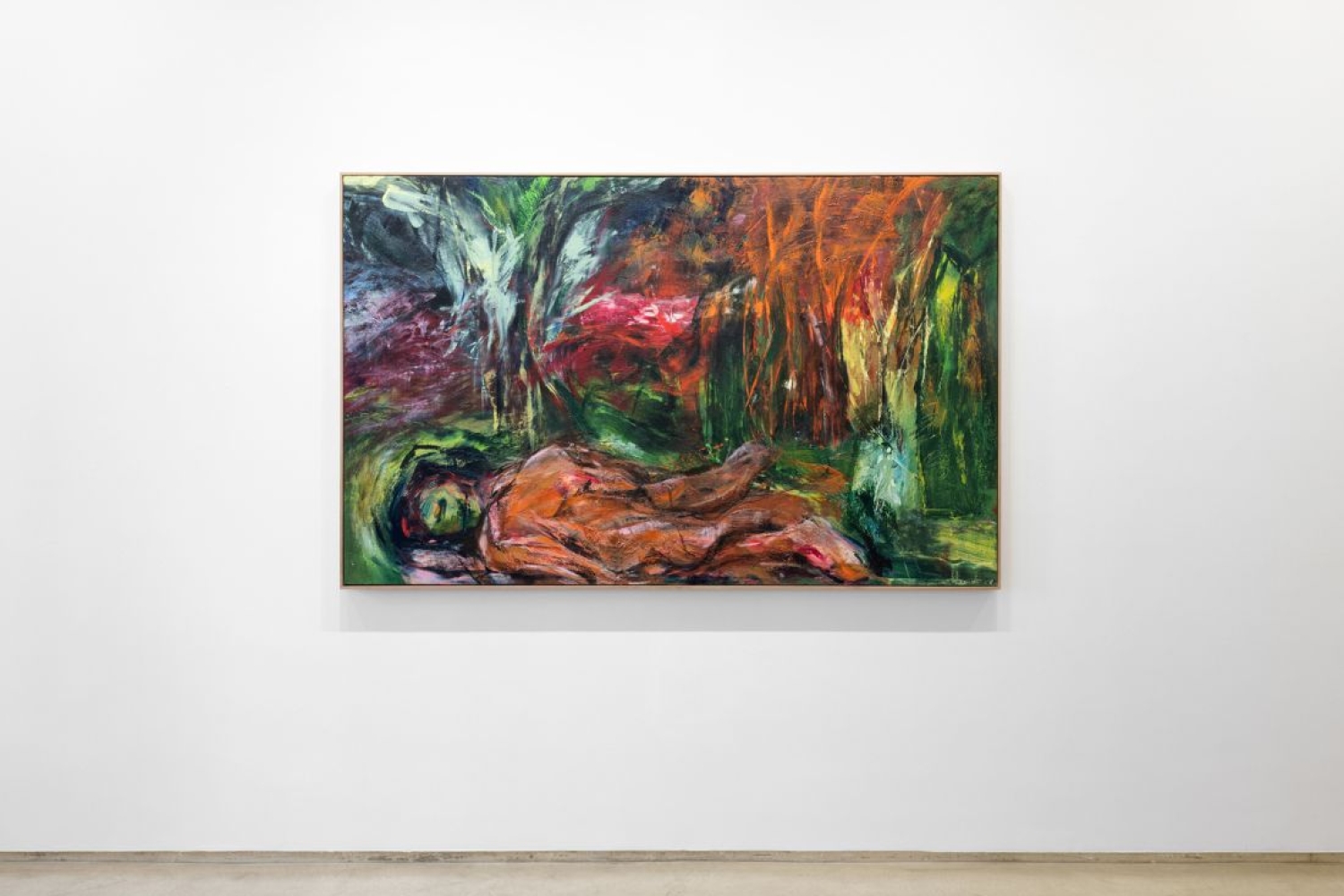

British-Sri Lankan artist Christopher Kulendran Thomas uses AI for his paintings not as shortcut but for an elaborative influences of ancestors that are beyond him. With a trained network of the work of successive generations of Sri Lankan artists, he tries to generate a collective consciousness that he then translates onto canvas. As he presents his solo exhibition, Exhale, at Experimenter Colaba, we talk to him about the nature of his paintings, influences, identity and the question of authorship.
Your paintings are informed by Sri Lanka’s colonial history, but also by the digital age. How do you combine the two worlds—art historical legacies and generative AI? Tell me about the process.
I guess I arrive at my paintings by kind of metabolising Sri Lanka’s colonial art history. Each work is a painting of a digital file. Each of those digital images is generated by a neural network trained on the work of successive generations of artists in Sri Lanka who have been influenced by the western canon. The network essentially analyses the art historical influences behind their aggregated work to generate a new image extrapolated from that analysis – a picture of a painting. And when that resulting image is painted onto canvas by hand, in my studio, the process of translating the image from screen to canvas involves channeling thousands of paintings that you’ve seen over the years, filtering those art historical references through each of the countless micro-decisions involved in every mark. Perhaps this seemingly-intuitive filtering of art historical memes is not that different to the memetic filtering done by the algorithm in the first place to generate the image.
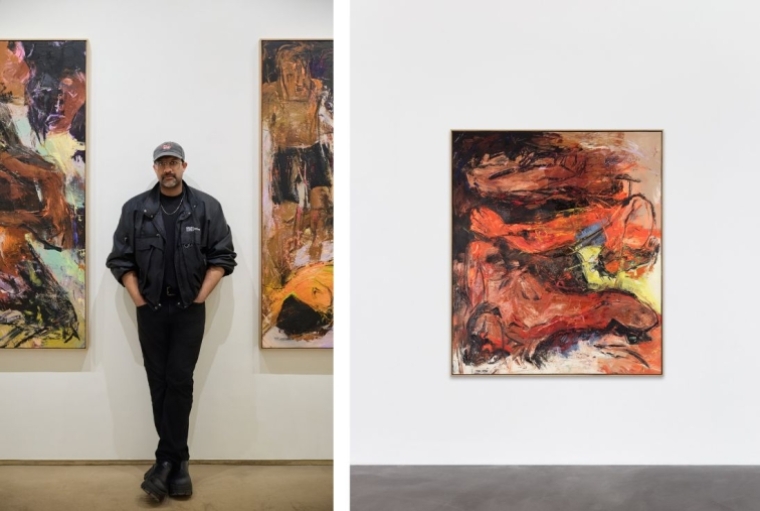
How do you see the relationship between AI, painting, and the question of authorship in your practice?
For me, it’s about channeling a network. Using AI tools to compose a painting is definitely not a shortcut – it’s not like using consumer AI image generators. To have the kind of control that my studio collaborators and I like to have in composing what to paint requires a much more elaborate process involving many steps and it takes time. But what’s great about this way of working is that you get to channel such a huge amount of influences that are beyond you – that you’re not even aware of. I end up with things in the painting that I don’t even know are there but that might mean something to you when you see it; because these paintings channel a kind of collective consciousness.
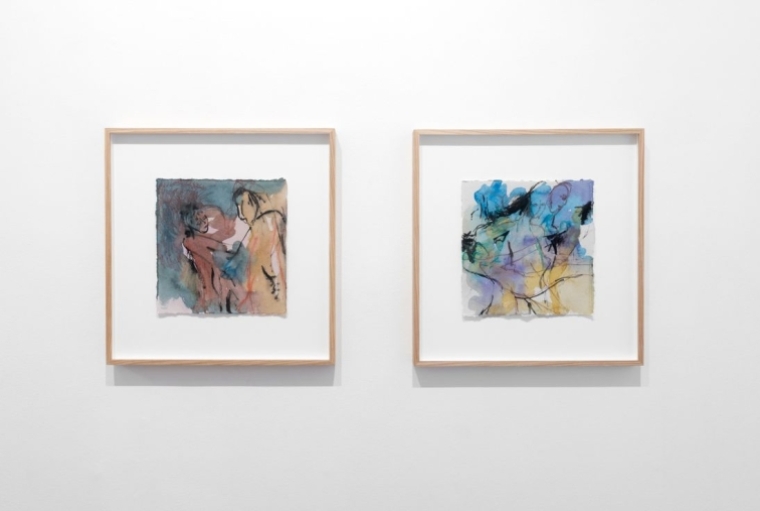
How does your personal connection to the Tamil diaspora influence your art, particularly in dealing with themes like displacement, identity, and memory?
We grew up with a liberation movement back home that’s then reclassified as a terrorist organisation and our homeland is wiped out as a result. The Eelam Tamil diaspora has grown up processing very different versions of the same history, so I think we’re naturally sceptical of how realities are constructed by those with the power to concoct them. But I think coming from somewhere that doesn’t exist anymore can also compel you to look beyond those fictions and invent your own world anew.
The title Exhale suggests a sense of release. What themes do you hope the exhibition will evoke in viewers?
Because my paintings compress influences from way beyond what I can even know, I hope the show will invoke responses that I can’t foresee.
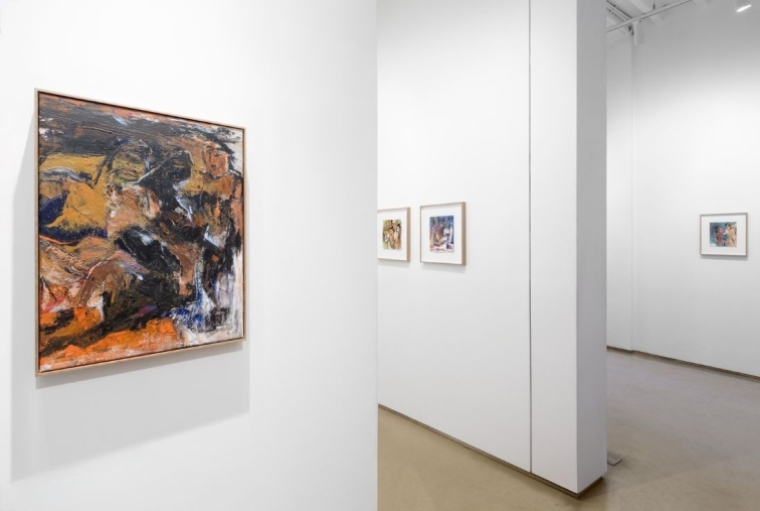
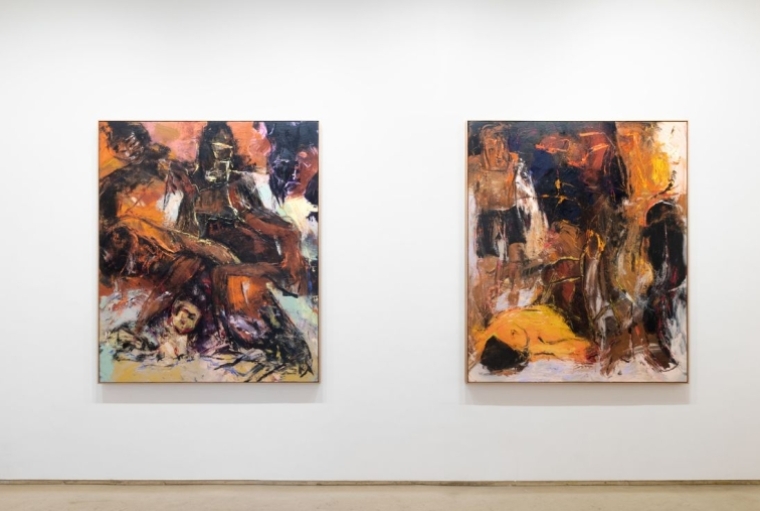
In the exhibition essay by Hammad Nasar, he talks about the seeds of doubt in your paintings. What role does the concept of 'doubt' play in Exhale?
I think at the core of my work is an uncertainty about whether we have ever even been ‘human’. I think when we use that word we’re usually referring to more than a biological category. We’re usually referring to a particular idea of the ‘individual’, from the West; an idea of what it means to be human that’s perhaps the ideological frontline of an empire. But I’m also quite infatuated with that idea—I find it endlessly fascinating how it's performed and proliferates. And in a way, painting is all about that fiction; it’s one of the ultimate expressions of it; which is probably part of what I find so thrilling about it. But I think at the heart of it is this kind of contradiction, or at least tension, this uncertainty, about where the human ends and everything else begins – the network, the ecology, the flow; and that tension is definitely a part of the excitement for me.
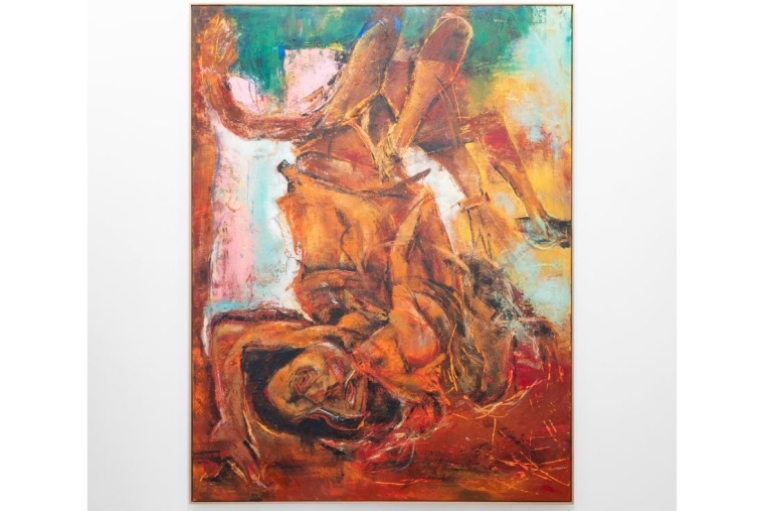
Words Paridhi Badgotri
Date 24.01.2025